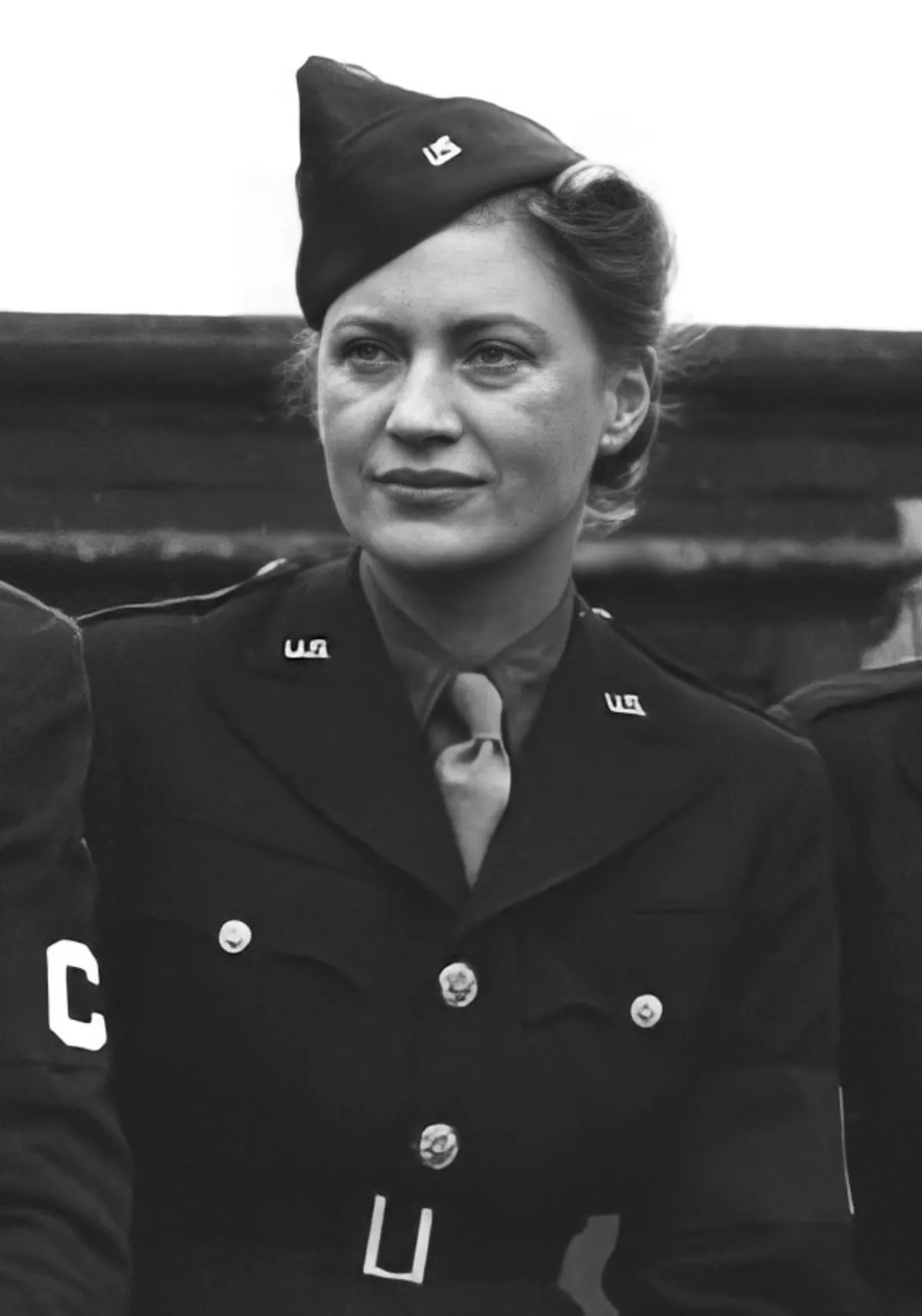 1.
1. Lee Miller was born on April 23,1907, in Poughkeepsie, New York.

 1.
1. Lee Miller was born on April 23,1907, in Poughkeepsie, New York.
Lee Miller's parents were Theodore and Florence Miller.
Lee Miller's father was of German descent, and her mother was of Scottish and Irish descent.
Lee Miller had a younger brother named Erik, and her older brother was the aviator Johnny Miller.
In 1925, aged 18, Lee Miller moved to Paris in France, where she studied lighting, costume, and design at the Ladislas Medgyes' School of Stagecraft.
Lee Miller returned to New York in 1926 and joined an experimental drama programme at Vassar College, taught by Hallie Flanagan, a pioneer of experimental theatre.
Lee Miller's father introduced her and her brothers to photography at an early age.
Lee Miller was hired by a fashion designer in 1929 to make drawings of fashion details in Renaissance paintings but, in time, grew tired of this and found photography more efficient.
In 1929, Lee Miller traveled to Paris intending to apprentice with the surrealist artist and photographer Man Ray.
Although, at first, he insisted that he did not take students, Lee Miller soon became his model and collaborator, as well as his lover and muse.
Some photographs taken by Lee Miller are credited to Man Ray.
One of Lee Miller's accounts involved a mouse running over her foot, causing her to switch on the light in the darkroom in mid-development of the photograph.
Lee Miller established a portrait and commercial photography studio with her brother Erik as her darkroom assistant.
Lee Miller rented two apartments in a building one block from Radio City Music Hall.
Clients of the Lee Miller Studio included BBDO, Henry Sell, Elizabeth Arden, Helena Rubinstein, Saks Fifth Avenue, I Magnin and Co.
In 1934, Lee Miller abandoned her studio to marry the Egyptian businessman and engineer Aziz Eloui Bey, who had come to New York City to buy equipment for the Egyptian National Railways.
In Cairo, Lee Miller took a photograph of the desert near Siwa that Magritte saw and used as inspiration for his 1938 painting Le Baiser.
Lee Miller contributed an object to the Surrealist Objects and Poems exhibition at the London Gallery in 1934.
Lee Miller returned to Paris and went to a party the day she arrived, where she reconciled with Man Ray, and met the British surrealist painter and curator Roland Penrose.
At the outbreak of World War II, Lee Miller was living at Downshire Hill in Hampstead, London with Penrose when Germany's aerial bombardment of the city began.
Lee Miller took portraits of nurses across Europe, including those on the front lines and prisoners of war.
Lee Miller traveled there only to find that the town was still being heavily fought over.
Lee Miller's photographs included the first recorded use of napalm.
Lee Miller's work provided "context for events" and "an eye-witness account" of the casualties of war.
Lee Miller's work was very specific and surrealist, like her previous publications and modelling with Vogue.
Lee Miller spent time composing her photographs, famously framing some from inside the cattle trains that had transported thousands of Jews to Nazi death camps.
Scherman's iconic photograph of Lee Miller sitting in the bathtub in Adolf Hitler's private apartment in Munich, with the dried mud of that morning's visit to Dachau on her boots deliberately dirtying Hitler's bathroom, was taken in the evening on 30 April 1945, coincidentally the same day that Hitler committed suicide.
Lee Miller did this following a CBS broadcast from Buchenwald by Edward R Murrow, and Richard Dimbleby's BBC broadcast from inside Bergen-Belsen.
Lee Miller described her alcoholism and recovery from alcohol abuse in his 1985 biography, The Lives of Lee Miller.
In November 1946, Lee Miller was commissioned by British Vogue to illustrate an article titled, "When James Joyce Lived in Dublin", by Joyce's old friend and confidant Constantine Curran.
In 1946, Lee Miller travelled with Roland Penrose to the United States, where she visited Man Ray in California.
Lee Miller provided photographs for her husband's biographies of Picasso and Antoni Tapies.
Lee Miller was investigated by the British security service MI5 during the 1940s and 1950s, on suspicion of being a Soviet spy.
In October 1969, Lee Miller was asked in an interview with a New York Times reporter what drew her to photography.
Lee Miller's response was that it was "a matter of getting out on a damn limb and sawing it off behind you".
Lee Miller died of lung cancer at Farley Farm House in 1977, aged 70.
Lee Miller was cremated, and her ashes were spread through her herb garden at Farley.
Lee Miller's work has served as inspiration for Gucci's Frida Giannini, Ann Demeulemeester, and Alexander McQueen.
That Lee Miller's work is known today is mainly due to the efforts of her son, Antony Penrose, who has been studying, conserving, and promoting his mother's work since the early 1980s.
Lee Miller discovered sixty thousand or so photographs, negatives, documents, journals, cameras, love letters, and souvenirs in cardboard boxes and trunks in Farley Farm's attic after his mother's death.
Lee Miller owns the house and offers tours of the works of Miller and Penrose.
Lee Miller's pictures are accessible at the Lee Miller Archives.
The audiobook Surrealism Reviewed was published in 2002, and a 1946 radio interview with Lee Miller can be heard on it.
Penrose's 1985 biography of Miller was the basis for the 2023 film by Ellen Kuras, Lee, with Kate Winslet starring as Miller.